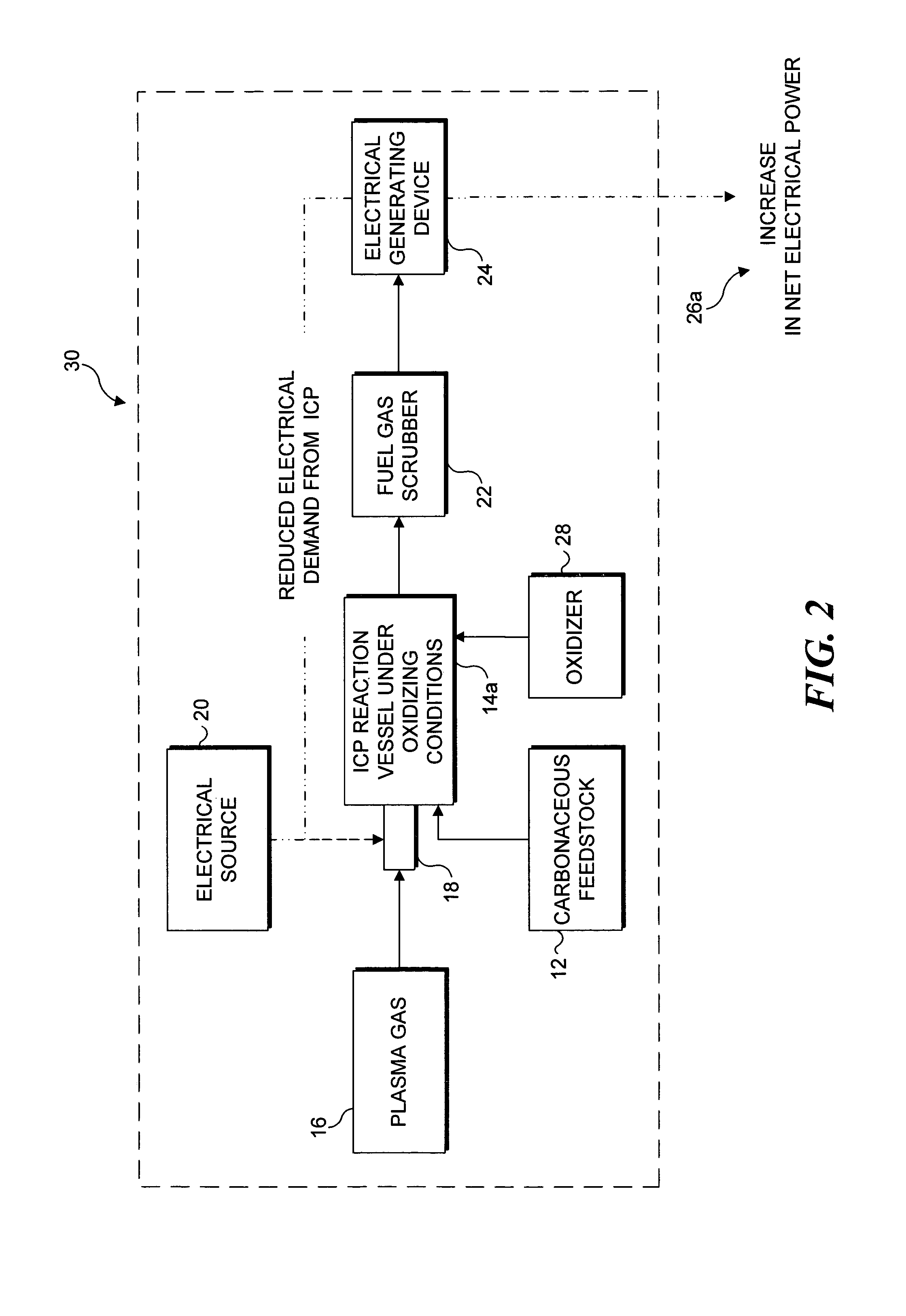Inductively coupled plasma/partial oxidation reformation of carbonaceous compounds to produce fuel for energy production
a technology of carbonaceous compounds and inductive coupling, which is applied in the direction of fuel cell integration, combustible gas purification/modification, and combustible gas production, etc., can solve the problems of steady decline in the cost of power production, less efficient small turbines, and substantial resistance losses in power transmission in this country, so as to reduce emissions, maximize the efficiency of the present invention, and generate even more electricity
- Summary
- Abstract
- Description
- Claims
- Application Information
AI Technical Summary
Benefits of technology
Problems solved by technology
Method used
Image
Examples
Embodiment Construction
[0044]The present invention uses a carbonaceous feedstock and reforms the feedstock into a fuel gas that can be used to produce electricity. This electricity can be generated in a central generating power plant, a distributed generating power plan, a power plant for remote service, or as part of ship-board power production and propulsion system. The reforming process occurs in an ICP reactor vessel. The highly reactive and high-temperature plasma produced by the ICP system reacts with the carbonaceous feedstock, reforming it into a fuel gas that generally includes hydrogen gas, methane gas, and carbon monoxide gas (among other compounds). The fuel gas is then cleaned by a gas conditioning system and fed into an electric power generating device to produce electrical power. A portion of the electrical power produced is used to enable continued operation of the ICP reactor, and the balance of the electric power can be supplied to other loads.
[0045]FIG. 1 illustrates a simplified proces...
PUM
| Property | Measurement | Unit |
|---|---|---|
| electrical power | aaaaa | aaaaa |
| electric power consumption | aaaaa | aaaaa |
| temperature | aaaaa | aaaaa |
Abstract
Description
Claims
Application Information
 Login to View More
Login to View More - R&D
- Intellectual Property
- Life Sciences
- Materials
- Tech Scout
- Unparalleled Data Quality
- Higher Quality Content
- 60% Fewer Hallucinations
Browse by: Latest US Patents, China's latest patents, Technical Efficacy Thesaurus, Application Domain, Technology Topic, Popular Technical Reports.
© 2025 PatSnap. All rights reserved.Legal|Privacy policy|Modern Slavery Act Transparency Statement|Sitemap|About US| Contact US: help@patsnap.com



